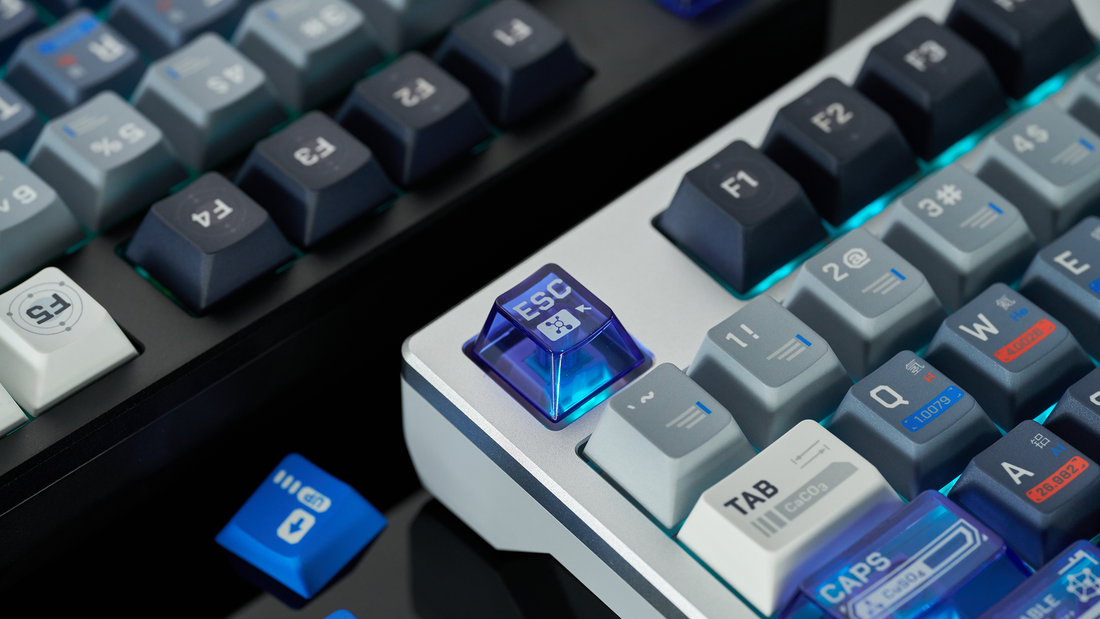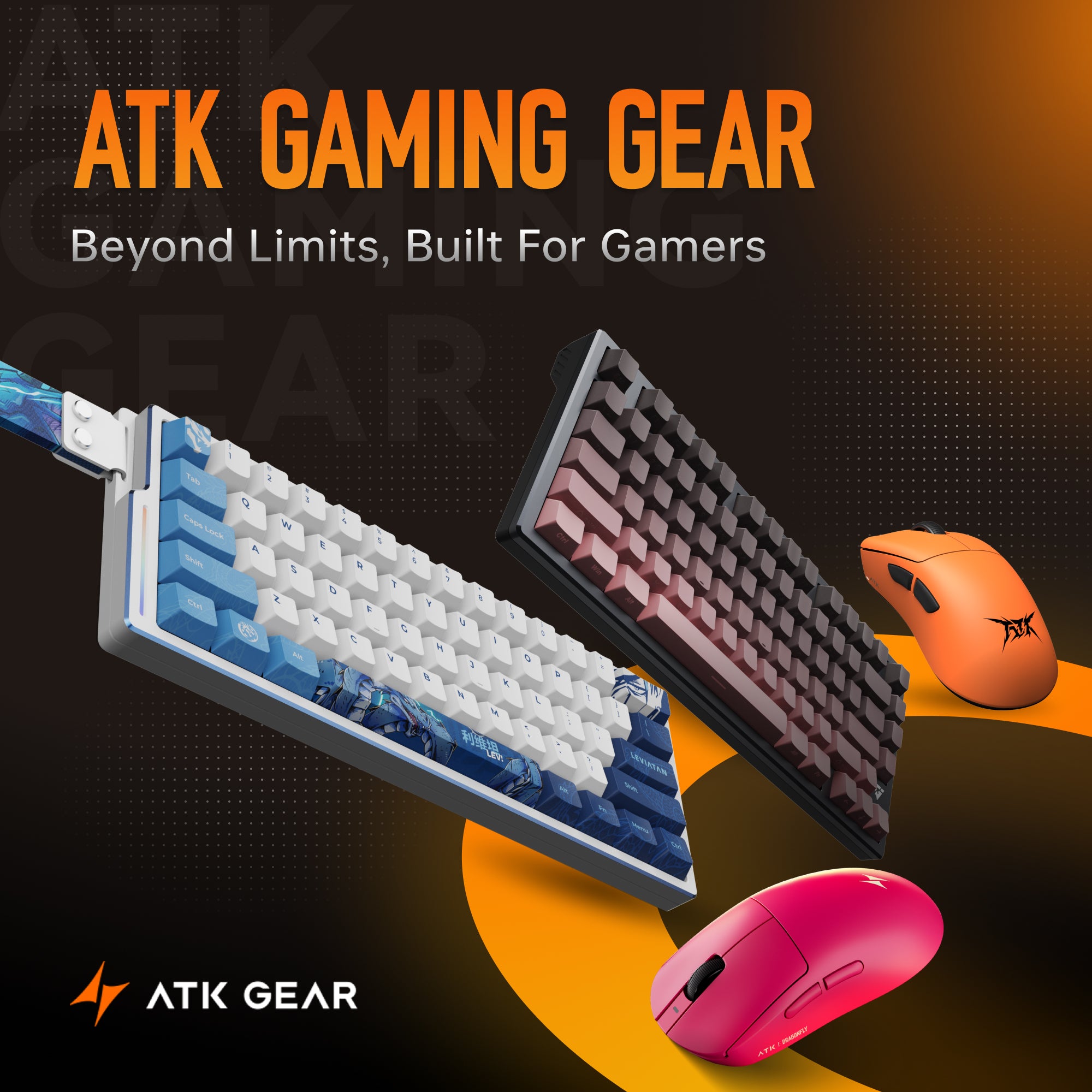Things You Might Need to Know About Keyboards
Whether in work, entertainment, or daily life, a keyboard is an essential input device. It is primarily used in various scenarios, such as text input, gaming operations, programming, and shortcut applications. In office settings, the keyboard is mainly used for text entry and shortcut operations; in gaming, feel and response time are crucial; and in programming, the layout and key feedback directly affect typing efficiency and comfort. Choosing the right keyboard is vital for a good user experience.
The Origin of Keyboards
The keyboard traces its origins back to the mechanical typewriter, evolving with the rise of computers. Early computer keyboards borrowed layouts from mechanical typewriters, with the QWERTY layout becoming the mainstream and still in use today. As technology progressed, keyboards transitioned from mechanical keys to membrane technology, and now to popular mechanical, low-profile, and magnetic key switches. This evolution has not only improved the user experience but also significantly enhanced feel and durability.

Types of Keyboards
There are many types of keyboards, each with its advantages, disadvantages, and suitable scenarios. Major types include:
- Membrane Keyboards: Lightweight and affordable, suitable for everyday office use, but with average feel.
- Mechanical Keyboards: Known for durability and feel, widely used in gaming and programming where long typing sessions are common. Feel varies by switch type.
- Aluminum Mechanical Keyboards: More robust and better in texture compared to traditional plastic housings, suitable for users with high requirements for feel and aesthetics.
- Low-Profile Mechanical Keyboards: With shorter key travel, providing a lighter feel, ideal for portability.
- Magnetic Switch Keyboards: Utilize magnetic sensing technology, ideal for gaming with features like rapid trigger/stop and exclusive functions.
Different keyboard types can be selected based on individual preferences to meet various needs.
Keyboard Sizes
Keyboard layouts come in various sizes to meet different usage needs:
- Full Size (104/108 Keys): Includes all standard keys, such as letter, function, navigation, and number pad keys, suitable for users requiring comprehensive functionality.
- 95% Layout (98/96 Keys): A slightly smaller full-size layout that optimizes the right function and number keys to save desktop space without sacrificing functionality.
- 80% Layout (87 Keys): Commonly referred to as TKL keyboards, this layout removes the number pad while compactly arranging function and navigation keys, suitable for users with space constraints.
- 75% Layout (84/86 Keys): More compact than the 87% layout, removing some function keys for a simpler experience.
- 65% Layout (68 Keys): Removes the function keys, further simplifying the layout, ideal for users seeking minimal design.
-
60% Layout (61 Keys): Builds on the 65% layout by removing the arrow keys and all function keys, perfect for ultra-portable needs.

Different sizes offer varying compromises in space and functionality, allowing users to select the most suitable size based on their actual needs.
Components of a Keyboard
A keyboard comprises multiple parts, each playing a crucial role in feel and durability:
- Keycaps: Made from various materials like ABS, PBT, and POM, each material offers different tactile sensations and wear resistance.
- Casing: The upper and lower covers provide support and protection, made from materials like plastic or aluminum alloy.
- Switches: Directly determine the keyboard's feel and actuation characteristics, with types including linear, tactile, and clicky switches.
- Plate: Helps secure the switches, enhancing the keyboard's overall stability.
- PCB: The printed circuit board responsible for signal transmission.
-
Dampening Pads: Such as Poron Foam and IXPE Pads, these provide excellent cushioning and noise reduction, enhancing the overall typing experience.

These components collectively determine the keyboard's feel, durability, and sound, allowing users to choose or customize different components based on their preferences.
Keyboard Accessories
In addition to core components, accessories can significantly enhance the user experience, including:
- Keycaps and Switches: Replacing keycaps or switches with different colors and materials allows for personalization of the keyboard's appearance and feel.
- Keycap Puller: A tool for easily removing keycaps, facilitating cleaning and replacement.
- Stabilizers: Ensure consistent feel when pressing larger keys, reducing wobble and noise.
- Data Cables: Used to connect devices and charge the keyboard, available in various colors and materials.
- Dust Covers: Protect the keyboard from dust when not in use.
- Wrist Rests: Many keyboards are relatively high, and using a wrist rest can improve comfort and reduce fatigue, especially for long typing or gaming sessions.
-
Decorative Straps: Personalize and beautify the keyboard; these are currently popular for decorating magnetic switch keyboards from brands like Wooting and Madlions.

These accessories provide a more personalized experience, enhancing both the comfort and aesthetics of the keyboard.
Keyboard Maintenance and Care
Proper cleaning and maintenance can extend the lifespan of a keyboard. Regularly wipe the keycaps with alcohol-free wipes, lubricate the switches, and keep the keyboard dry and clean. For mechanical keyboards, appropriate lubrication and maintenance are especially important to minimize wear and improve smooth operation. Avoid placing the keyboard in damp or smoky environments to prevent damage.
Keyboard Recommendations
The market is flooded with various keyboards, and users can choose based on their individual needs and budget. At atk.store, we offer a wide range of cost-effective mechanical and magnetic switch keyboards with rich features. Visit our keyboard collection to learn more.



